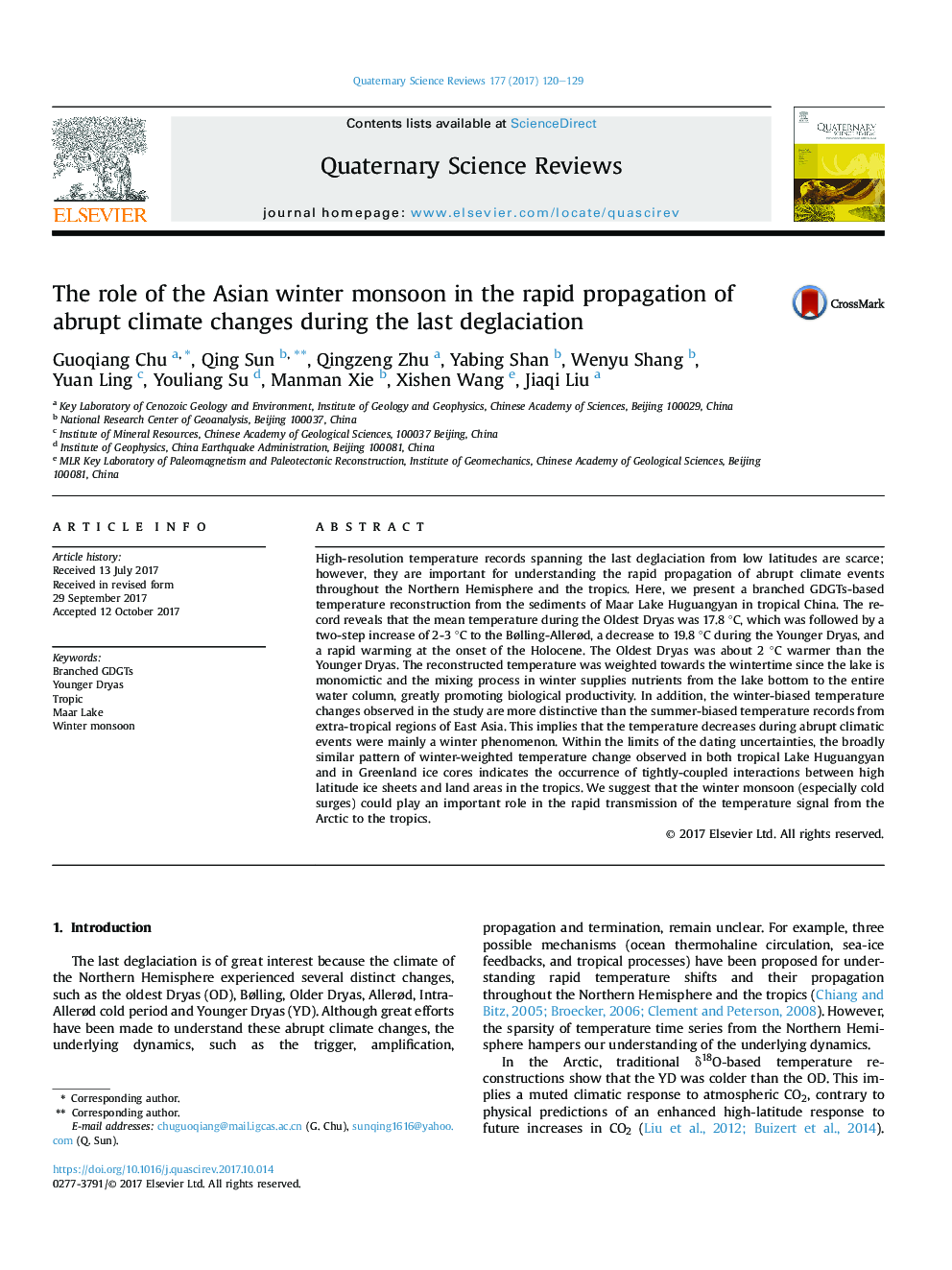| Article ID | Journal | Published Year | Pages | File Type |
|---|---|---|---|---|
| 8915091 | Quaternary Science Reviews | 2017 | 10 Pages |
Abstract
High-resolution temperature records spanning the last deglaciation from low latitudes are scarce; however, they are important for understanding the rapid propagation of abrupt climate events throughout the Northern Hemisphere and the tropics. Here, we present a branched GDGTs-based temperature reconstruction from the sediments of Maar Lake Huguangyan in tropical China. The record reveals that the mean temperature during the Oldest Dryas was 17.8 °C, which was followed by a two-step increase of 2-3 °C to the Bølling-Allerød, a decrease to 19.8 °C during the Younger Dryas, and a rapid warming at the onset of the Holocene. The Oldest Dryas was about 2 °C warmer than the Younger Dryas. The reconstructed temperature was weighted towards the wintertime since the lake is monomictic and the mixing process in winter supplies nutrients from the lake bottom to the entire water column, greatly promoting biological productivity. In addition, the winter-biased temperature changes observed in the study are more distinctive than the summer-biased temperature records from extra-tropical regions of East Asia. This implies that the temperature decreases during abrupt climatic events were mainly a winter phenomenon. Within the limits of the dating uncertainties, the broadly similar pattern of winter-weighted temperature change observed in both tropical Lake Huguangyan and in Greenland ice cores indicates the occurrence of tightly-coupled interactions between high latitude ice sheets and land areas in the tropics. We suggest that the winter monsoon (especially cold surges) could play an important role in the rapid transmission of the temperature signal from the Arctic to the tropics.
Related Topics
Physical Sciences and Engineering
Earth and Planetary Sciences
Geology
Authors
Guoqiang Chu, Qing Sun, Qingzeng Zhu, Yabing Shan, Wenyu Shang, Yuan Ling, Youliang Su, Manman Xie, Xishen Wang, Jiaqi Liu,
